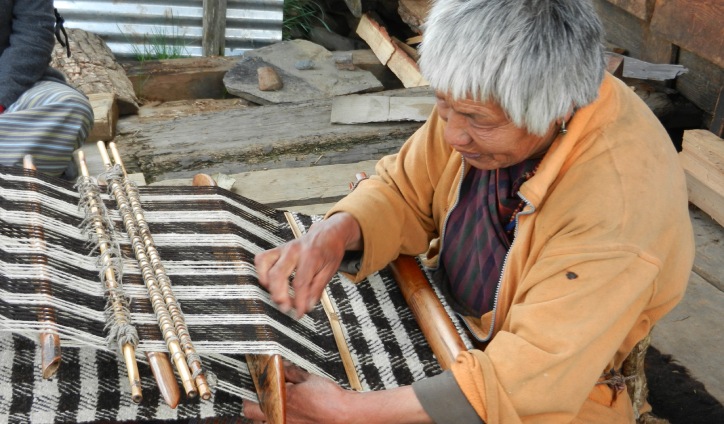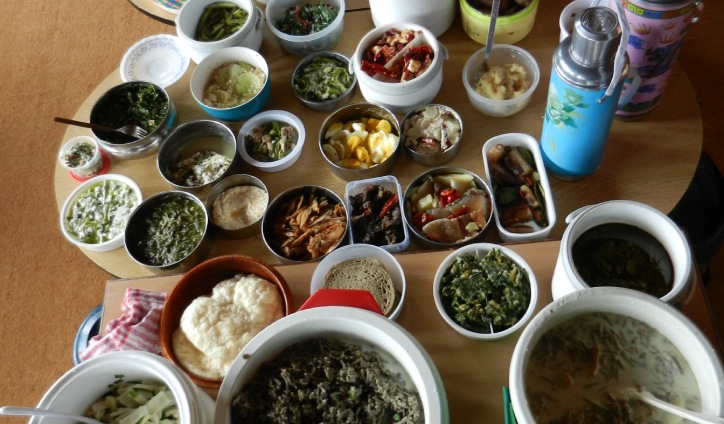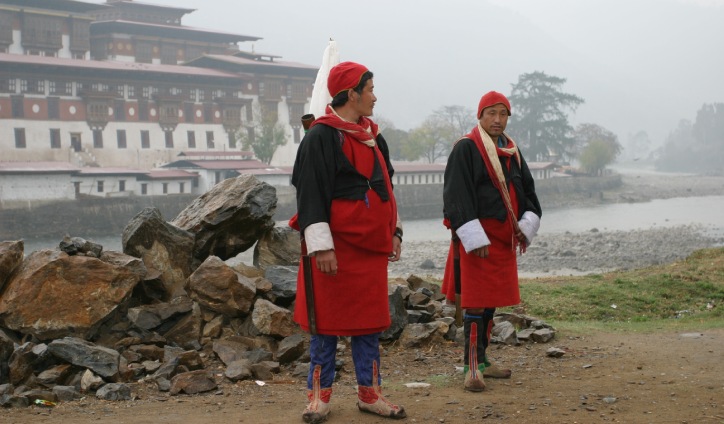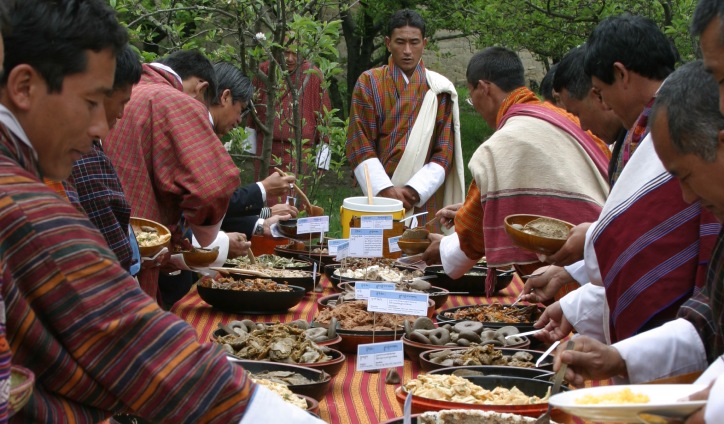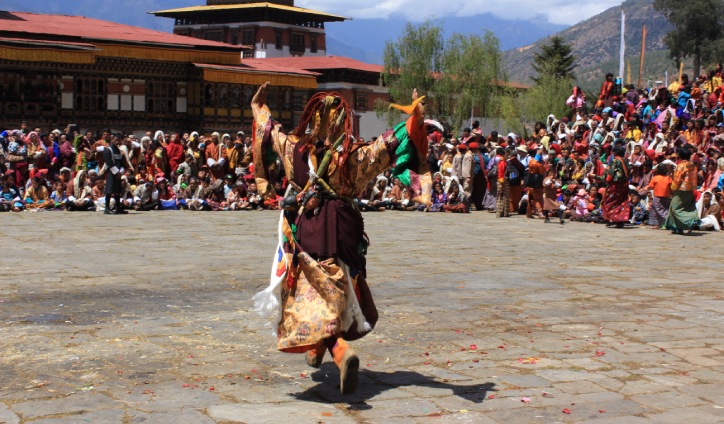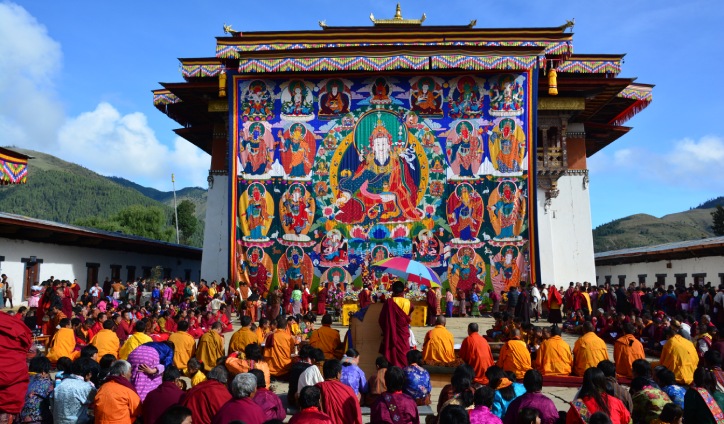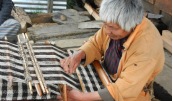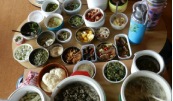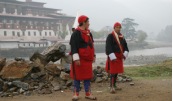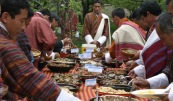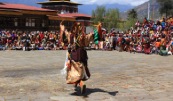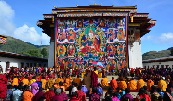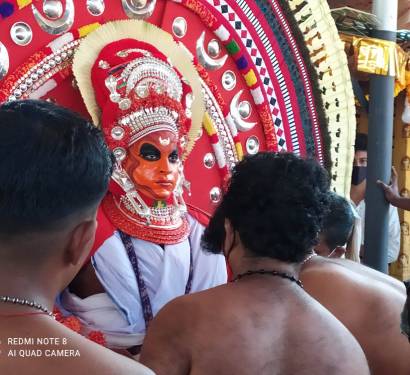Bhutan Cultural-Art Tourism - 9N10D
Theme: Cultural-Art Tourism
Experiences you will have: Honeymooners, Water bodies or sports, Pure nature, Interacting with locals, Local food, Religeous/Spiritual tourism, Visit to monasteries, Mountains.
Destination: Bhutan.
Location in brief: Bhutan is a small neighbouring country of India.
Accommodation type: 3 Star
Suitable Group size: Any
Check in 2:00 PM | Check out 11:00 AM
Food: Continental, Ethnic Local, Indian.
Hygiene: Maintained as per the laid down protocol and norms.
Terrain: Hilly.
Vehicle provided: Private. As per the request or pre-determined itinerary.
Climate: In the winter season, the high altitude points are covered with snow. At the foothills the climate is cool and bearable. Summer (March to June) is the best season to visit as temperature is pleasant. Visiting in monsoon is a treat for eyes because of greenery and misty air and crowd is also very less.
Check out Bhutan's promotional video here:
Experiences you will have: Honeymooners, Water bodies or sports, Pure nature, Interacting with locals, Local food, Religeous/Spiritual tourism, Visit to monasteries, Mountains.
Destination: Bhutan.
Location in brief: Bhutan is a small neighbouring country of India.
Accommodation type: 3 Star
Suitable Group size: Any
Check in 2:00 PM | Check out 11:00 AM
Food: Continental, Ethnic Local, Indian.
Hygiene: Maintained as per the laid down protocol and norms.
Terrain: Hilly.
Vehicle provided: Private. As per the request or pre-determined itinerary.
Climate: In the winter season, the high altitude points are covered with snow. At the foothills the climate is cool and bearable. Summer (March to June) is the best season to visit as temperature is pleasant. Visiting in monsoon is a treat for eyes because of greenery and misty air and crowd is also very less.
Check out Bhutan's promotional video here:
Experience breath-taking natural beauty at diverse places and also rich culture of Bhutan – The Land of Thunder Dragon. SAMSONA GETAWAYS, ensures that you not only see but feel the joy of what this mysterious land offers! Beautiful locales, moderately adventurous trails and a flavor of the local life and tastes. This package offers cultural experiences and introduces you to variety of art forms and places.
How to reach: Paro is the only International airport in Bhutan. Paro is connected to Kolkata and Delhi very conveniently. Mumbai-Paro flights are operational for limited period.
Bhutan is accessible by road as well. One can catch a flight to Bagdogra airport and then drive to Jaigaon 2:15 hours away which is a border town. From Jaigaon one can enter Phuensholling which is a border town from Bhutan side. From there one can reach Thimphu – capital of Bhutan – in 5:30 hours by road.
Central Bhutan and other main cities in Bhutan are connected by domestic flights.
Bhutan is accessible by road as well. One can catch a flight to Bagdogra airport and then drive to Jaigaon 2:15 hours away which is a border town. From Jaigaon one can enter Phuensholling which is a border town from Bhutan side. From there one can reach Thimphu – capital of Bhutan – in 5:30 hours by road.
Central Bhutan and other main cities in Bhutan are connected by domestic flights.
What you can do there?: Subject to availability of time and your interest, following activities may be undertaken at respective places, if not already covered. Some of the activities are chargeable:
Visit to -:
1. Local traditional village – Punakha or Paro
2. Hot stone bath - Paro
3. Centenary Farmers’ market - Thimphu
4. Traditional medicine Institute - Thimphu
5. Traditional paper making from Daphnia and Edgeworthia - Thimphu
6. Picnic lunch at river side - Punakha
7. Simply Bhutan – A museum built in style of traditional farmhouse - Thimphu
8. Wearing Bhutanese dress for photo – Thimphu or Paro
9. Bhutan Post – Thimphu
10. Archery
Nearby places of interest: West Bhutan is more frequented by tourists but Central Bhutan is one of the most beautiful places in the world. East Bhutan is untouched but tourists’ infrastructure is less developed there. In South Bhutan, there is sanctuary where one can get to see pure raw nature.
Visit to -:
1. Local traditional village – Punakha or Paro
2. Hot stone bath - Paro
3. Centenary Farmers’ market - Thimphu
4. Traditional medicine Institute - Thimphu
5. Traditional paper making from Daphnia and Edgeworthia - Thimphu
6. Picnic lunch at river side - Punakha
7. Simply Bhutan – A museum built in style of traditional farmhouse - Thimphu
8. Wearing Bhutanese dress for photo – Thimphu or Paro
9. Bhutan Post – Thimphu
10. Archery
Nearby places of interest: West Bhutan is more frequented by tourists but Central Bhutan is one of the most beautiful places in the world. East Bhutan is untouched but tourists’ infrastructure is less developed there. In South Bhutan, there is sanctuary where one can get to see pure raw nature.
Typical itinerary:
Culture and Art tourism with Jambay Lhakhang Festival: 10 days
Day 1: Arrive at Paro International Airport from Delhi, Calcutta, Kathmandu or Bangkok. Paro is situated in a beautiful valley at 2280 metres and is a fitting introduction to this charming kingdom. Your guide will meet you and take you on a short one-hour drive along the Paro and Thimphu river valleys to Thimphu, Bhutan’s capital, at 2320 metres. You can stop on the way to take in the magnificent Tamchhog Lhakhang, the hereditary place of worship for Bhutan’s iron bridge builder. Take a late afternoon walk around town and soak in the atmosphere of this magical capital with its busy shops and bazaars and photogenic citizens in national dress.
Overnight in Thimphu (3 star hotel).
Day 2: Thimphu sightseeing. We will visit the National Library and the School of Traditional Arts, the National Institute of Traditional Medicine and the Jungshi Handmade Paper factory, which produces traditional Bhutanese paper from the daphne bush. You can also browse the striking collection of intricate textiles at the National Textile Museum and visit the Folk Heritage Museum. You can also visit Gagyel Lhundrup Weaving Centre in Changzamto where you can watch women weaving intricate fabric for the traditional Bhutanese dress of gho (for men) and kira (for women). You may also visit the Goldsmiths workshop where you can watch metalworking, making everything from sacred objects used to decorate temples and Dzongs to metal tools used by the Bhutanese people for everyday tasks. Then visit the newly opened postal museum, detailing the history of Bhutan’s postal system and showcasing Bhutan’s rich assortment of interesting stamps. If you would like to view or buy Bhutanese handicrafts you may like to visit the new market opposite Taj Tashi hotel which has an array of stalls run by local handicraft shops selling purely home made articles with no imports.
Overnight in Thimphu (3 star hotel)
Day 3: Thimphu to Punakha. In the morning drive approximately 3 hours to the old capital, Punakha, via Dochu La pass at 3050 metres, where we will stop for a hot drink and enjoy spectacular panoramic views of the Eastern Himalaya ranges. You will notice the change of climate and vegetation as we approach low-lying Punakha at 1250 metres. In the afternoon visit the imposing Punakha Dzong, “Palace of Great Happiness”. Built in 1637, it is strategically placed at the confluence of two rivers, the Po Chu and the Mo Chu. Then take a pleasant walk for an hour or so across the terraced fields of Sopsokha village to Chimi Lhakhang (Temple of Fertility) built in the 15th century by the ‘Divine Madman’ (Lama Drukpa Kuenley).
Overnight in Punakha (3 star hotel)
Day 4: Punakha to Bumthang. Drive approximately 4.5 hours to Trongsa, the gateway to central Bhutan at 2180 metres. Just before reaching Trongsa you may like to visit Tsangkha Tashicholing monastery where there is an arts and crafts training institute with around 45 young monks learning traditional skills of woodcarving, sculpture, painting and embroidery. Then continue on your way. Set amidst spectacular scenery, Trongsa Dzong, the ancestral home of Bhutan’s royal family, commands the eye from miles away. You can also visit Ta Dzong, the museum in the watchtower dedicated to the Wangchuk dynasty, which tells the stories of the Dzong and the valley it has watched over for centuries and features personal belongings of the Kings and Queens of Bhutan. Continue a further 2.5 hours through some of Bhutan’s most beautiful landscapes to Bumthang, an area of high valleys at 2580 to 3100 metres.
Overnight in Bumthang (3 star hotel)
Day 5: This morning you will visit Jambay Lhakhang Festival also known as Bumthang Drup – see below for the history of the festival. You will see locals dressed in their finest clothes who have walked from miles around to attend the festivities. They come to watch masked dances, to pray, and to feast. While the underlying purpose of the festival is spiritual, dances are more often like plays, telling stories where good triumphs over evil, or depicting significant historical events, especially surrounding the life of Bhutan's patron saint, Padmasambhava (also known as Guru Rinpoche). There is inevitably a great deal of socialising as well. The occasion provides an opportunity for people to relax and forget the daily routine, and to dress in their finest clothes and jewellery, but it is also an occasion for prayer and blessings. In the afternoon, you may continue to witness festival or visit Kurjey Lhakhang, Tamshing Lhakhang and Bhutan’s largest Dzong (Jakar), with its picturesque location overlooking the Chokhor valley. If time permits, visit Membar Tsho ‘the Flaming Lake’, one of Bhutan’s most important pilgrimage sites.
Overnight in Bumthang (3 star hotel)
Day 6: Drive approximately 5-6 hours to Gangtey at 2900 metres. Enjoy the views of the immense and remote Phobjikha valley and the black mountain ranges. Visit Gangtey Gompa (one of Bhutan’s oldest monasteries and recently extensively renovated) and join the monks during their daily rituals and ceremony in the temple. You can sit with the monks and meditate and also offer tea and snack to the monks as token of gratitude.
Overnight in Gangtey (3 star hotel)
Day 7: Today we return to Paro, a drive of approximately 7 hours, via Wangdi. Wangdi (also known as Wangdue Phodrang) was originally considered Bhutan’s secondary capital and it commands an important central position. Sadly Wangdi Dzong was gutted by fire in June 2012, destroying in a few hours not only a magnificent building that had stood proudly for hundreds of years, but also the painstaking work that had been in progress for many months to rebuild recent earthquake damage using traditional construction methods. There is little now to see in Wangdi and after a brief stop for lunch continue on your way.
Overnight in Paro (3 star hotel).
Day 8: This morning you can visit the impressive Paro Rinpung Dzong, one of the finest examples of Bhutanese architecture. You can also visit the National Museum. This was previously housed in the Ta Dzong (watch tower) built on top of the hill above Rinpung Dzong to defend Rinpung Dzong and the Paro valley during times of war, in an unusual circular construction resembling a conch shell. Unfortunately, an earthquake in September 2011 damaged the Ta Dzong and the contents of the museum were moved to a neighbouring building. You can still see a magnificent collection of Bhutanese artefacts – costumes, religious paintings, arms, textiles and a fascinating collection of Bhutan stamps. Near to the museum you may also be able to see a demonstration of traditional wood turning skills by local artisans who make traditional wooden bowls and cups – and you can try your hand as well if you wish. Nearby you can also visit the 7th century Kyichu Lhakhang, a temple of historical significance and one of the most sacred shrines in Bhutan.
Overnight in Paro (3 star hotel)
Day 9: Take a day walk to the ‘Tiger's Nest’, the sacred Taktshang monastery which clings to the rock face 900 metres above the valley floor. Guru Rinpoche is said to have flown to the site riding on a tigress. He subsequently meditated here for three months. It is one of Bhutan’s most holy sites and draws pilgrims not only from Bhutan but also from neighbouring Buddhist countries. You can have lunch at the Taktshang cafeteria from where you get a spectacular view of the monastery. On the way back you may be interested to visit a manor house turned museum in a local village. The house dates from the 17th Century and the museum is designed to showcase the culture of medieval rural Bhutan. Afterwards you may also have time to visit Dumtse Lhakhang, a temple built by Thangtong Gyalpo, the iron bridge builder.
Overnight in Paro (3 star hotel).
Day 10: Early in the morning your guide will accompany you to the airport to see you off onto your flight and wish you Tashi Delek (goodbye and good luck).
Inclusions:
Accommodation
Meals as per the plan
Guide
Sightseeing fees
All applicable Taxes
SDF
Exclusions:
Flight tickets
Expenses of personal nature
Anything not mentioned in Inclusions.
Culture and Art tourism with Jambay Lhakhang Festival: 10 days
Day 1: Arrive at Paro International Airport from Delhi, Calcutta, Kathmandu or Bangkok. Paro is situated in a beautiful valley at 2280 metres and is a fitting introduction to this charming kingdom. Your guide will meet you and take you on a short one-hour drive along the Paro and Thimphu river valleys to Thimphu, Bhutan’s capital, at 2320 metres. You can stop on the way to take in the magnificent Tamchhog Lhakhang, the hereditary place of worship for Bhutan’s iron bridge builder. Take a late afternoon walk around town and soak in the atmosphere of this magical capital with its busy shops and bazaars and photogenic citizens in national dress.
Overnight in Thimphu (3 star hotel).
Day 2: Thimphu sightseeing. We will visit the National Library and the School of Traditional Arts, the National Institute of Traditional Medicine and the Jungshi Handmade Paper factory, which produces traditional Bhutanese paper from the daphne bush. You can also browse the striking collection of intricate textiles at the National Textile Museum and visit the Folk Heritage Museum. You can also visit Gagyel Lhundrup Weaving Centre in Changzamto where you can watch women weaving intricate fabric for the traditional Bhutanese dress of gho (for men) and kira (for women). You may also visit the Goldsmiths workshop where you can watch metalworking, making everything from sacred objects used to decorate temples and Dzongs to metal tools used by the Bhutanese people for everyday tasks. Then visit the newly opened postal museum, detailing the history of Bhutan’s postal system and showcasing Bhutan’s rich assortment of interesting stamps. If you would like to view or buy Bhutanese handicrafts you may like to visit the new market opposite Taj Tashi hotel which has an array of stalls run by local handicraft shops selling purely home made articles with no imports.
Overnight in Thimphu (3 star hotel)
Day 3: Thimphu to Punakha. In the morning drive approximately 3 hours to the old capital, Punakha, via Dochu La pass at 3050 metres, where we will stop for a hot drink and enjoy spectacular panoramic views of the Eastern Himalaya ranges. You will notice the change of climate and vegetation as we approach low-lying Punakha at 1250 metres. In the afternoon visit the imposing Punakha Dzong, “Palace of Great Happiness”. Built in 1637, it is strategically placed at the confluence of two rivers, the Po Chu and the Mo Chu. Then take a pleasant walk for an hour or so across the terraced fields of Sopsokha village to Chimi Lhakhang (Temple of Fertility) built in the 15th century by the ‘Divine Madman’ (Lama Drukpa Kuenley).
Overnight in Punakha (3 star hotel)
Day 4: Punakha to Bumthang. Drive approximately 4.5 hours to Trongsa, the gateway to central Bhutan at 2180 metres. Just before reaching Trongsa you may like to visit Tsangkha Tashicholing monastery where there is an arts and crafts training institute with around 45 young monks learning traditional skills of woodcarving, sculpture, painting and embroidery. Then continue on your way. Set amidst spectacular scenery, Trongsa Dzong, the ancestral home of Bhutan’s royal family, commands the eye from miles away. You can also visit Ta Dzong, the museum in the watchtower dedicated to the Wangchuk dynasty, which tells the stories of the Dzong and the valley it has watched over for centuries and features personal belongings of the Kings and Queens of Bhutan. Continue a further 2.5 hours through some of Bhutan’s most beautiful landscapes to Bumthang, an area of high valleys at 2580 to 3100 metres.
Overnight in Bumthang (3 star hotel)
Day 5: This morning you will visit Jambay Lhakhang Festival also known as Bumthang Drup – see below for the history of the festival. You will see locals dressed in their finest clothes who have walked from miles around to attend the festivities. They come to watch masked dances, to pray, and to feast. While the underlying purpose of the festival is spiritual, dances are more often like plays, telling stories where good triumphs over evil, or depicting significant historical events, especially surrounding the life of Bhutan's patron saint, Padmasambhava (also known as Guru Rinpoche). There is inevitably a great deal of socialising as well. The occasion provides an opportunity for people to relax and forget the daily routine, and to dress in their finest clothes and jewellery, but it is also an occasion for prayer and blessings. In the afternoon, you may continue to witness festival or visit Kurjey Lhakhang, Tamshing Lhakhang and Bhutan’s largest Dzong (Jakar), with its picturesque location overlooking the Chokhor valley. If time permits, visit Membar Tsho ‘the Flaming Lake’, one of Bhutan’s most important pilgrimage sites.
Overnight in Bumthang (3 star hotel)
Day 6: Drive approximately 5-6 hours to Gangtey at 2900 metres. Enjoy the views of the immense and remote Phobjikha valley and the black mountain ranges. Visit Gangtey Gompa (one of Bhutan’s oldest monasteries and recently extensively renovated) and join the monks during their daily rituals and ceremony in the temple. You can sit with the monks and meditate and also offer tea and snack to the monks as token of gratitude.
Overnight in Gangtey (3 star hotel)
Day 7: Today we return to Paro, a drive of approximately 7 hours, via Wangdi. Wangdi (also known as Wangdue Phodrang) was originally considered Bhutan’s secondary capital and it commands an important central position. Sadly Wangdi Dzong was gutted by fire in June 2012, destroying in a few hours not only a magnificent building that had stood proudly for hundreds of years, but also the painstaking work that had been in progress for many months to rebuild recent earthquake damage using traditional construction methods. There is little now to see in Wangdi and after a brief stop for lunch continue on your way.
Overnight in Paro (3 star hotel).
Day 8: This morning you can visit the impressive Paro Rinpung Dzong, one of the finest examples of Bhutanese architecture. You can also visit the National Museum. This was previously housed in the Ta Dzong (watch tower) built on top of the hill above Rinpung Dzong to defend Rinpung Dzong and the Paro valley during times of war, in an unusual circular construction resembling a conch shell. Unfortunately, an earthquake in September 2011 damaged the Ta Dzong and the contents of the museum were moved to a neighbouring building. You can still see a magnificent collection of Bhutanese artefacts – costumes, religious paintings, arms, textiles and a fascinating collection of Bhutan stamps. Near to the museum you may also be able to see a demonstration of traditional wood turning skills by local artisans who make traditional wooden bowls and cups – and you can try your hand as well if you wish. Nearby you can also visit the 7th century Kyichu Lhakhang, a temple of historical significance and one of the most sacred shrines in Bhutan.
Overnight in Paro (3 star hotel)
Day 9: Take a day walk to the ‘Tiger's Nest’, the sacred Taktshang monastery which clings to the rock face 900 metres above the valley floor. Guru Rinpoche is said to have flown to the site riding on a tigress. He subsequently meditated here for three months. It is one of Bhutan’s most holy sites and draws pilgrims not only from Bhutan but also from neighbouring Buddhist countries. You can have lunch at the Taktshang cafeteria from where you get a spectacular view of the monastery. On the way back you may be interested to visit a manor house turned museum in a local village. The house dates from the 17th Century and the museum is designed to showcase the culture of medieval rural Bhutan. Afterwards you may also have time to visit Dumtse Lhakhang, a temple built by Thangtong Gyalpo, the iron bridge builder.
Overnight in Paro (3 star hotel).
Day 10: Early in the morning your guide will accompany you to the airport to see you off onto your flight and wish you Tashi Delek (goodbye and good luck).
Inclusions:
Accommodation
Meals as per the plan
Guide
Sightseeing fees
All applicable Taxes
SDF
Exclusions:
Flight tickets
Expenses of personal nature
Anything not mentioned in Inclusions.
Rules:
• Right of admission reserved.
• All homestays have their own house rules and it will be shared post confirmation.
• Homestays are local area accommodations, therefore, it is important for tourists to behave properly with the locals hosting and serving them.
• Activities mentioned above may change due to change in weather conditions and otherwise.
• Tourists are informed to take care of the nature and use dustbins to dispose the trash.
• Water is always scarce in arid areas. So, please conserve water at all the homestays.
• The charges for activities shall be extra.
• Confirmations are subject to availability.
• All communications should be with SAMSONA GETAWAYS team only or authorized representative of SAMSONA GETAWAYS.
• The locations could be exotic and may have difficult terrains. Please prepare well for the locations with respect to weather conditions. SAMSONA GETAWAYS is not responsible for any injury or damage due to tough environmental conditions. Few sites need trek to reach, so please read about the property and location carefully.
• The pictures shown in the website are for illustration purpose and actual as far as possible.
• Please plant a TREE while you stay there, weather permitting. Contact the Homestay owner for assistance.
• Please try to reach our locations by day light.
• Reach out to us for any clarification.
• Keep a torch and lighter handy, in case of load shedding and snow fall.
Cancellation Policy:
High Season and Peak Season time (1st March to 15th July) & (20th Dec to 2nd Jan) & Diwali holidays
• Cancellation by 30 days before arrival: 50% refund
• Cancellation by 15 days before arrival: 25% refund
• Cancellation after 15days before arrival: No refund
Off season (Other than the dates above):
• Cancellation by 30 days before arrival: 50% refund
• Cancellation by 15 days before arrival: 25% refund
• Cancellation by 7 days before arrival: 10% refund
• Cancellation after 7 days before arrival: No refund.
• Right of admission reserved.
• All homestays have their own house rules and it will be shared post confirmation.
• Homestays are local area accommodations, therefore, it is important for tourists to behave properly with the locals hosting and serving them.
• Activities mentioned above may change due to change in weather conditions and otherwise.
• Tourists are informed to take care of the nature and use dustbins to dispose the trash.
• Water is always scarce in arid areas. So, please conserve water at all the homestays.
• The charges for activities shall be extra.
• Confirmations are subject to availability.
• All communications should be with SAMSONA GETAWAYS team only or authorized representative of SAMSONA GETAWAYS.
• The locations could be exotic and may have difficult terrains. Please prepare well for the locations with respect to weather conditions. SAMSONA GETAWAYS is not responsible for any injury or damage due to tough environmental conditions. Few sites need trek to reach, so please read about the property and location carefully.
• The pictures shown in the website are for illustration purpose and actual as far as possible.
• Please plant a TREE while you stay there, weather permitting. Contact the Homestay owner for assistance.
• Please try to reach our locations by day light.
• Reach out to us for any clarification.
• Keep a torch and lighter handy, in case of load shedding and snow fall.
Cancellation Policy:
High Season and Peak Season time (1st March to 15th July) & (20th Dec to 2nd Jan) & Diwali holidays
• Cancellation by 30 days before arrival: 50% refund
• Cancellation by 15 days before arrival: 25% refund
• Cancellation after 15days before arrival: No refund
Off season (Other than the dates above):
• Cancellation by 30 days before arrival: 50% refund
• Cancellation by 15 days before arrival: 25% refund
• Cancellation by 7 days before arrival: 10% refund
• Cancellation after 7 days before arrival: No refund.
